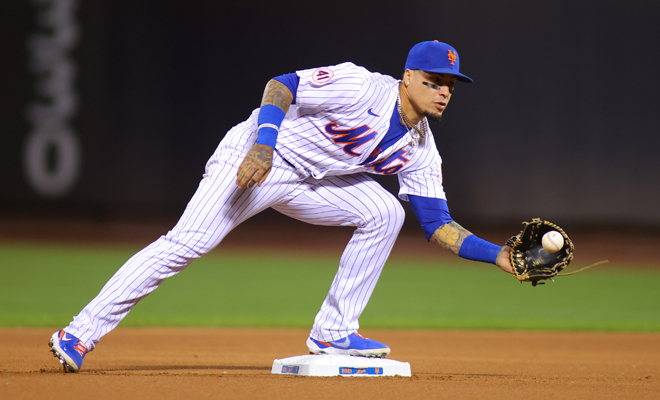-
 August 8, 2025, 11:38 am
August 8, 2025, 11:38 amLast Updated on August 8, 2025 11:38 am by Paul Williamson | Published: August 8, 2025
The Major League Baseball trade deadline has come and gone, perhaps with fewer league altering moves than seasons prior, but still a significant league wide shake up nonetheless. It’s been years since we’ve seen this quality and quantity of backend relief pitchers on the move, and despite the starting pitching market falling flat, enough rental bats found new homes to notably reorient a number of teams playoff chances, and some fantasy baseball values as well.
Most fantasy leagues have their trade deadlines set a couple weeks after the MLB deadline, potentially as soon as today in some Yahoo leagues, or next week in ESPN and Fantrax leagues. The reality of the fantasy baseball trade deadline is that no one piece of advice can reign supreme, especially with all of the different league formats, playoff permutations, dynasty implications, keepers, etc., which is why our team, myself included, try and answer questions to the best of our ability, particularly during this time of year.
Still, having an idea of what strategies and trade structures can best benefit your team is important, and I’ll break down the type of framework you should be looking for depending on your league format and team situation. And as always, feel free to ask further questions, tagging myself @nbakerngb on X, or any of the other SportsEthos Fantasy Baseball (@ethosfantasybb) team for specifics.
Dynasty Leagues, No Playoffs
Dynasty leagues without a playoff system are the easiest type of fantasy league to decide on a path forward for-if your team has a solid chance at winning the title, go for it, and if not, stack future assets. If you are out of the title race, you’ll want to focus on selling assets who are older and/or having career years; someone like Eugenio Suarez would be a prime candidate for a trade. Sometimes, contenders can even overvalue younger players having excellent seasons, leading to some crazy valuations of players like Pete Crow-Armstrong, or Jacob Wilson. For a selling club, your focus should be all in on future value, which can often time be found in injured or minor league players. Assuming your team is in a adequate position to compete next season, pitchers returning from season ending injuries are prime targets, as are 2026 bounce back candidates who may have recently recovered from injury.
For those in the title race, as great as it might be to swing a blockbuster deal for a budding young star, the best value opportunities often present themselves in those career year type of players, especially since selling clubs have little incentive to hold onto them. Again, there’s some nuance required here, as an aging but contending team may require some greater emphasis on protecting prospect value, while a team stacked in prospects in one or two positions can afford to get older to facilitate a serious run at a title.
Want to get access to the rest of Nathan’s article? You’ll need to have a FANTASYPASS membership. Click here to learn more and sign up! Premium Access Required
Click here to join us on Discord!
And Follow us on Twitter by clicking here
Join the SportsEthos team by filling out an application by clicking here
Follow Nathan at @nbakerngb
